 W
WCaryocolum crypticum is a moth of the family Gelechiidae. It is found in widely separated localities in northern Italy, Switzerland and Greece. The habitat consists of xerophilous steppes and rocky areas with sparse vegetation from about 500 to 1,300 meters.
 W
WCatatinagma stenoptera is a moth of the family Gelechiidae. It is found in south-eastern Turkmenistan.
 W
WCatharylla bijuga is a moth of the family Crambidae described by Théo Léger and Bernard Landry in 2014. It occurs in lowlands in the Guianas and Brazil.
 W
WCatharylla chelicerata is a moth of the family Crambidae described by Théo Léger and Bernard Landry in 2014. It is found in French Guiana and Brazil.
 W
WCatharylla coronata is a moth of the family Crambidae described by Théo Léger and Bernard Landry in 2014. It is found in Brazil.
 W
WCatharylla gigantea is a moth of the family Crambidae described by Théo Léger and Bernard Landry in 2014. It is found in French Guiana, Guyana and the Brazilian state of Amazonas.
 W
WCatharylla mayrabonillae is a moth of the family Crambidae described by Théo Léger and Bernard Landry in 2014. It is found in Panama, Costa Rica, Colombia, Venezuela, Guyana, Suriname, French Guiana, Ecuador, Peru and Brazil.
 W
WCatharylla serrabonita is a moth of the family Crambidae described by Théo Léger and Bernard Landry in 2014. It is found in the Brazilian states of Bahia and Espírito Santo.
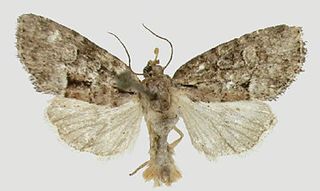 W
WCherokeea attakullakulla is a moth in the family Noctuidae and the only species in the genus Cherokeea. It is found in North Carolina and Georgia.
 W
WCircanota simplex is a species of moth of the family Tortricidae. It is found in Panama and Ecuador, at altitudes between sea level and 600 meters.
 W
WCircanota undulata is a species of moth of the family Tortricidae. It is found in Costa Rica and Panama, at altitudes below about 900 meters.
 W
WColeophora nepetellae is a moth of the family Coleophoridae. It is found in Italy and France, where it has been recorded from the Alpes-Maritimes, Upper Var, Alpes-de-Haute-Provence, Hautes-Alpes, Isère, the Drôme, and further to the west from the Vaucluse where it is common on the slopes of Mont Ventoux wherever Nepeta nepetella grows.
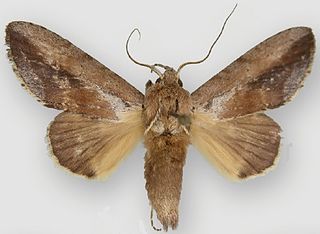 W
WDisphragis bifurcata is a moth in the family Notodontidae first described by J. Bolling Sullivan and Michael G. Pogue in 2014. It is found from Guatemala to Colombia, probably extending south into northern Ecuador. It is found at lower altitudes and moderate elevations up to about 1,000 meters.
 W
WEthmia adrianforsythi is a moth in the family Depressariidae. It is found in Costa Rica, where it has been recorded from middle elevations on the Caribbean slope of the Cordillera Volcánica de Guanacaste and in the lowlands of Sarapiquí. The habitat consists of rain forests.
 W
WEthmia berndkerni is a moth in the family Depressariidae. It is found in Costa Rica, where it has been recorded from the foothills of the Cordillera de Guanacaste, the northern Caribbean lowlands, in the Cordillera Volcánica Central and at the Península de Osa. The habitat consists of rain forests.
 W
WEthmia billalleni is a moth in the family Depressariidae. It is found in Costa Rica, where it has been recorded from middle elevations at the Cordillera de Guanacaste. The habitat consists of rain forests.
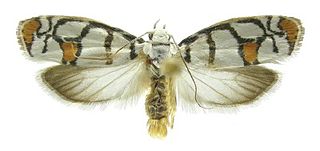 W
WEthmia blaineorum is a moth in the family Depressariidae. It is found in Costa Rica, where it has been recorded from the Pacific side of Cordillera de Guanacaste at altitudes ranging from sea level to 600 meters. The habitat consists of dry forests.
 W
WEthmia dianemillerae is a moth in the family Depressariidae. It is found in Costa Rica, where it has been recorded at middle elevations on the Caribbean slope of Cordillera Volcánica de Guanacaste, Cordillera Volcánica Central and in the lowlands of the northern Caribbean. The habitat consists of rain forests.
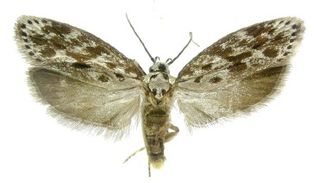 W
WEthmia dimauraorum is a moth in the family Depressariidae. It is found in Costa Rica, where it has been recorded at altitudes between 700 and 1,300 meters on the Pacific slope of the Cordillera de Guanacaste, at 750 meters (2,460 ft) in the Cordillera Central and at 1,000 meters (3,300 ft) at the Caribbean side of the Cordillera de Tilarán.
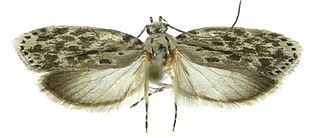 W
WEthmia ehakernae is a moth in the family Depressariidae. It is found in Costa Rica, where it has been recorded from altitudes between 700 and 1,300 meters on the Pacific side of the Cordillera de Guanacaste and Cordillera de Tilarán. The habitat consists of rain forests.
 W
WEthmia helenmillerae is a moth in the family Depressariidae. It is found in Costa Rica, where it has been recorded from the Pacific slope of the Cordillera de Guanacaste at altitudes ranging from 0 to 579 meters. The habitat consists of dry forests.
 W
WEthmia hendersonorum is a moth in the family Depressariidae. It is found in Costa Rica, where it has been recorded from the Caribbean slope at an altitude of 600 meters (2,000 ft). The habitat consists of dry forests.
 W
WEthmia johnpringlei is a moth in the family Depressariidae. It is found in northern Costa Rica, where it has been recorded from the western sides of the Cordillera de Guanacaste at altitudes between 300 and 600 meters. The habitat consists of dry forests and rain forests.
 W
WEthmia laphamorum is a moth in the family Depressariidae. It is found in Costa Rica, where it has been recorded from both slopes of the Cordillera Volcánica de Guanacaste and Península de Nicoya at altitudes between 20 and 600 meters. The habitat consists of dry forests.
 W
WEthmia lesliesaulae is a moth in the family Depressariidae. It is found in Costa Rica, where it has been recorded from both sides of the Cordillera Volcánica de Guanacaste al altitudes ranging from 300 to 645 meters. The habitat consists of rain forests.
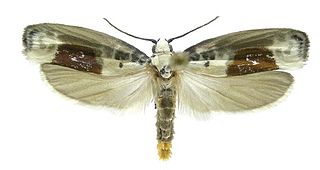 W
WEthmia millerorum is a moth in the family Depressariidae. It is found in Costa Rica, where it has been recorded from 1,150 to 1,300 meters in the Cordillera Volcánica de Guanacaste. The habitat consists of rain forests.
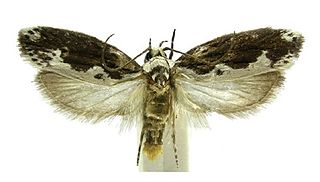 W
WEthmia miriamschulmanae is a moth in the family Depressariidae. It is found in Costa Rica, where it has been recorded from the Pacific side of the Cordillera Volcánica de Guanacaste and on the Península de Nicoya at altitudes ranging from 25 to 700 meters. The habitat consists of dry forests.
 W
WEthmia nicholsonorum is a moth in the family Depressariidae. It is found in northern Costa Rica.
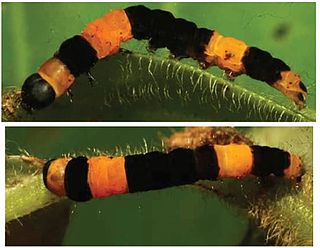 W
WEthmia normgershenzi is a moth in the family Depressariidae. It is found in Costa Rica, where it has been recorded from the east side of the Cordillera Volcánica de Guanacaste from 400 to 660 meters. The habitat consists of rain forests.
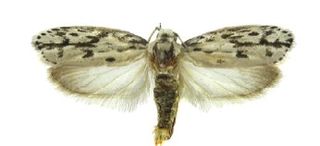 W
WEthmia petersterlingi is a moth in the family Depressariidae. It is found in Costa Rica, where it has been recorded from both sides of the Cordillera Volcánica de Guanacaste at altitudes between 180 and 790 meters. The habitat consists of rain forests.
 W
WEthmia randycurtisi is a moth in the family Depressariidae. It is found in Costa Rica, where it has been recorded from the Cordillera Volcánica de Tilarán and Cordillera Volcánica Central al altitudes ranging from 1,200 to 1,600 meters.
 W
WEthmia randyjonesi is a moth in the family Depressariidae. It is found in Costa Rica, where it has been recorded from the Cordillera Volcánica de Guanacaste, Tilarán and Cordillera Volcánica Central at altitudes ranging from 500 to 1,200 meters. The habitat consists of rain forests.
 W
WEthmia stephenrumseyi is a moth in the family Depressariidae. It is found in Costa Rica, where it has been recorded from most of the country at altitudes ranging from 660 to 1,250 meters.
 W
WEthmia tilneyorum is a moth in the family Depressariidae. It is found in Costa Rica, where it has been recorded from the Pacific slope of the Cordillera Volcánica de Guanacaste and on the Península de Nicoya at altitudes between 50 and 160 meters. The habitat consists of dry forests.
 W
WEthmia turnerorum is a moth in the family Depressariidae. It is found in Costa Rica, where it has been recorded from both sides of the Cordillera Volcánica de Guanacaste at altitudes raning from 242 to 832 meters. The habitat consists of dry forests and rain forests.
 W
WGadirtha fusca is a moth of the family Nolidae. It is found in east-central and south-eastern China.
 W
WHalolaguna discoidea is a moth in the family Lecithoceridae. It is found in China.
 W
WHalolaguna flabellata is a moth in the family Lecithoceridae. It is found in Guangxi, China.
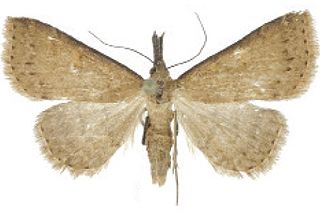 W
WNaarda ardeola is a species of moth of the family Noctuidae. It was first described by Balázs Tóth and László Aladár Ronkay in 2014. It is found in the mountains of northern Thailand.
 W
WNaarda egrettoides is a species of moth of the family Noctuidae. It was first described by Balázs Tóth and László Aladár Ronkay in 2014. It is found in the mountains of northern Thailand.
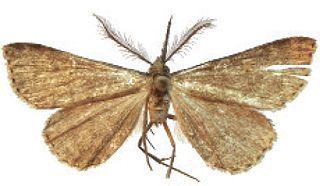 W
WNaarda pocstamasi is a species of moth of the family Noctuidae. It was first described by Balázs Tóth and László Aladár Ronkay in 2014. It is found in northern Vietnam.
 W
WNudorthodes molino is a moth in the family Noctuidae first described by J. Donald Lafontaine, J. Bruce Walsh and Clifford D. Ferris in 2014. It is found in the western US in southeastern Arizona and southwestern New Mexico.
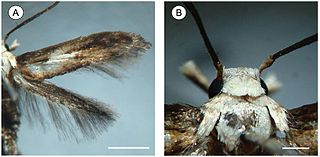 W
WPalaeomystella fernandesi is a moth of the family Agonoxenidae. It is found in Atlantic rain forest of Brazil.
 W
WPhyllodonta alajuela is a moth in the family Geometridae first described by J. Bolling Sullivan in 2014. It is found in Costa Rica, possibly extending into Nicaragua. It has been recorded from altitudes between 500 and 1,150 meters.
 W
WPhyllodonta esperanza is a moth in the family Geometridae first described by J. Bolling Sullivan in 2014. It is found in the Talamancas and Central Volcanic and Tilarán ranges in Costa Rica, possibly extending into the other Costa Rican mountain ranges and northern Panama. It has been collected at elevations above 1,200 meters.
 W
WPhyllodonta intermediata is a moth in the family Geometridae first described by J. Bolling Sullivan in 2014. It is found in the Talamancas and Central Volcanic and Tilarán ranges in Costa Rica, possibly extending into the other Costa Rican mountain ranges and northern Panama. It has been recorded from elevations between 1,275 and 2,280 meters.
 W
WProtorthodes mexicana is a moth in the family Noctuidae first described by J. Donald Lafontaine in 2014. It is found in Xalapa, Mexico.
 W
WProtorthodes texicana is a moth in the family Noctuidae first described by J. Donald Lafontaine in 2014. It is known from west-central Texas and southern Mexico.
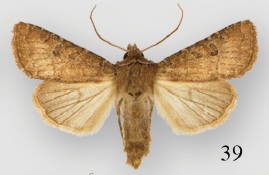 W
WProtorthodes ustulata is a moth in the family Noctuidae first described by J. Donald Lafontaine, J. Bruce Walsh and Clifford D. Ferris in 2014. It is found in North America from south-eastern Wyoming southward to the Guadalupe Mountains in western Texas and westward to central and south-eastern Arizona and northern Mexico.
 W
WScotopteryx kurmanjiana is a species of moth of the family Geometridae first described by Hossein Rajaei and Gyula M. László in 2014. It is found on both sides of Kopet-Dagh Mountains in north-eastern Iran and southern Turkmenistan.
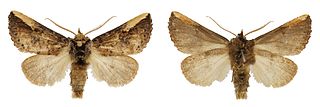 W
WSymmerista inbioi is a moth in the family Notodontidae first described by Isidro A. Chacón in 2014. It has been collected between 1,250 and 2,700 meters in highland cloud forests of the Cordillera de Talamanca in Costa Rica.
 W
WSymmerista luisdiegogomezi is a moth in the family Notodontidae first described by Isidro A. Chacón in 2014. It has been collected between 2,450 and 2,600 meters in highland cloud forests dominated by Quercus trees in the foothills west of the Cordillera de Talamanca in southern Costa Rica.
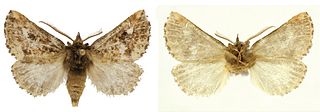 W
WSymmerista minaei is a moth in the family Notodontidae first described by Isidro A. Chacón in 2014. It has been collected at between 2,400 and 2,600 meters in highland cloud forests of the Cordillera de Talamanca in Costa Rica.
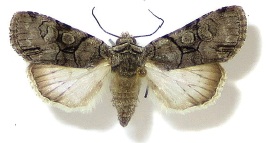 W
WSympistis forbesi is a moth of the family Noctuidae. It has been recorded from Iowa, Illinois and Minnesota and is believed to be extirpated from the eastern portion of the range in New York and New Jersey.
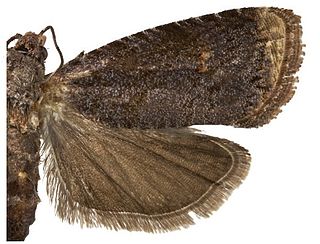 W
WThaumatovalva albolineana is a species of moth of the family Tortricidae first described by Alicia E. Timm and John Wesley Brown in 2014. It is found in the Democratic Republic of the Congo and Kenya. It is found at altitudes between about 1,500 and 1,600 meters.
 W
WThaumatovalva deprinsorum is a species of moth of the family Tortricidae first described by Alicia E. Timm and John Wesley Brown in 2014. It is found in the Democratic Republic of the Congo, where it has been recorded from middle elevations.